Chris Grinter, on July 1st, 2010 And now for the even more infrequently reoccurring series, vox populi! For those without scarring high school memories of latin class (through no fault of my teacher) I’ll bring you up to speed – the title roughly translates to “voice of the people”. Here is another old e-mail that I’ve been saving. It is a 100% real message, but of course I have redacted the real names and addresses to protect the innocent. Enjoy! I also highly encourage submissions of your own-
Winter 2008:
“Hi, I’m so glad I found you. Zdaj, I hope you can help me. 1982, while camping at an old gold mining camp in the Mendocino National Forest I was bitten by a large brown spider. It took three days for the venom to pass through my system. On day three I was 95% blind, the bite swelled to a large grotesquely deep red bump on my arm. I’ll never forget the 12 hours the venom attacked me. The price I payed to survive this spiders venom was…….to loose absolutely all my body fat. I spoke with a doctor from Santa Rosa by phone from a friends place in (some small CA town). He knew about this spider and couldn’t believe I suvived the venom when I told him I lost all my body fat. He also told me it was impossible for someone to survive loosing all their body fat in 12 ur. I reminded him that this was an impossible situation. He told me that this spider is being kept from the public. I believe this spider came from China or Russia. These spiders don’t share anything with other Cali spiders. They have big bodies and short stout legs. The female that bit me was about 4 inch’s and, had 5 males. Four years later, while living in the Hayward hills, I couldn’t believe my eyes, running across the floor, another one. This spider was about 6 inch’s. I know these spiders don’t climb walls or spin webs. They build nest’s, and obtain 4-5 males to protect her and find food. The female never leave’s the nest except…………when a larger female drives her out and, kills her males. This is when people are bitten by this spider, as she runs around looking for another nest. Bites are very uncommon. I wondered………….how big was the female that drove that 6 inch from her nest. In………….how big do they get. Can I find this spider on display at (your museum)? Is it possible to find all the information their is on this very dangerous spider?”
Nadaljuj branje Vox populi, volume II
Chris Grinter, on June 26th, 2010 Welcome to volume eight of the inconsistently reoccurring series, Genij tiska. Sem prišel čez Ta članek recently regarding an endemic Puerto Rican butterfly. Who can tell me exactly why this report is misleading? It may be a little trickier than the standard GOP (I suggest discarding any previously associated acronyms with those letters). Hint, just telling me the butterfly in the picture is from Malaysia is not the answer I’m looking for!
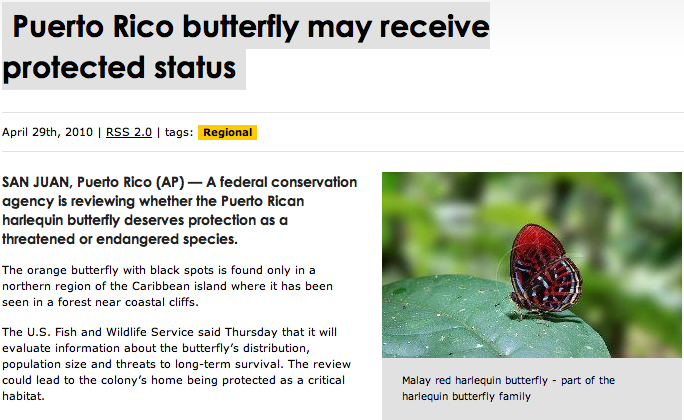
Chris Grinter, on June 23rd, 2010 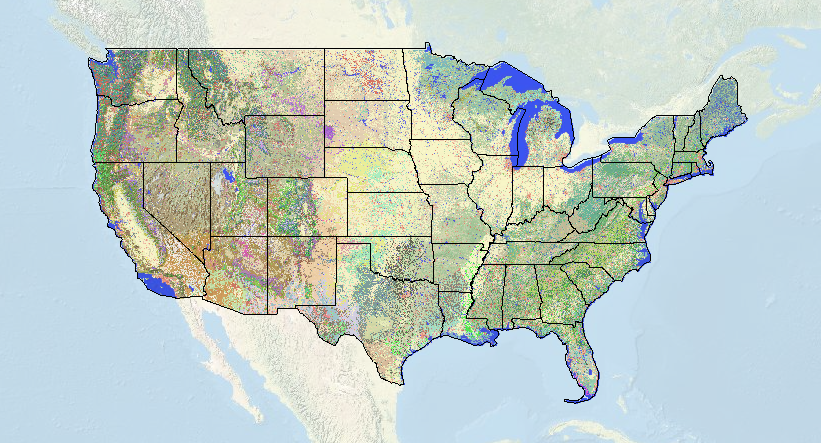
I’ve always wondered how to find the correct terminology for land cover in a given area. Usually, I just ballpark something along the lines of “oak chaparral”. Ampak zdaj sem lahko uporabite ta super nov zemljevid ki nam jih je USGS / National Biological informacijsko infrastrukturo. The level of detail is amazing, in lahko določite stopnjo natančnosti s kapljico zavihku down (1-3). Zdaj s topo zemljevid high-def ZDA lahko vidim, kje so največji stojala Monterrey bora (pravzaprav je to California Coastal Closed-Cone iglavca Gozd in Woodland) da bom lahko optimalno postaviti mojo past ta vikend.
Nadaljuj branje Landscape Cover Zemljevid
Chris Grinter, on June 18th, 2010 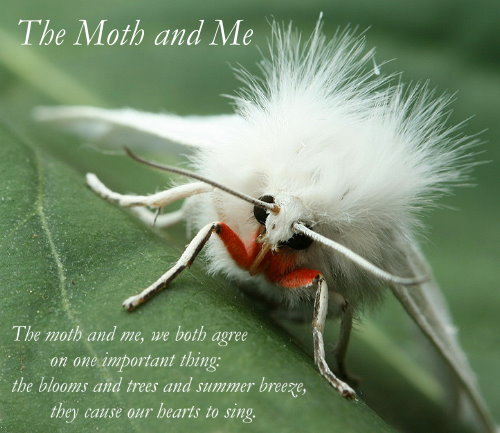
Welcome to The Moth and Me #12, and my first blog carnival. Despite blogging for a few months I have yet to take a look back and reflect on exactly how I became enamored with lepidoptera in the first place. Remembering a time or location where this happened is impossible, and like many of my colleagues and I’m sure many of my readers, I had a butterfly net and “bug cage” in hand as soon as I could walk. When it comes to entomology I believe almost everyone falls in love at first with a large and striking insect. For me it was a butterfly, naturally. I can remember staring for endless hours at the diversity of Ornithoptera and Papilio illustrated in Paul Smart’s famous book. Somewhere along the way in pursuit of something new I began to stray into the nocturnal world. Moths comprise the majority of the diversity of Lepidoptera; while there are nearly 11,000 species in the United States, only a few hundred are butterflies. This quickly opened a door (maybe into an abyss…) to the shocking abundance found everywhere around us. This amazing diversity has now drawn me deep into the biology and evolutionary history of the Lepidoptera. Editing these fourteen contributions of moth blogging together I just can’t help but to reflect back on some of my own mothing journey.

Perhaps if I was a child in Europe this moth (Deilephila elpenor porcellus) would have been the first to catch my eye. Over at Urban Moths Ron Laughton has discovered the stunning diversity in his own back yard in much the same way as I did growing up here in the US. Take a look at the types of traps he has been using, most of which he constructed himself. One of the best behaviors of moths is their willingness to dive headlong into the light. Not too far from Ron, Mike Beale has been blogging british moths as well. It can be pretty amazing just how similar our two faunas are (a few moths actually are the same).
Nadaljuj branje vešče in Me #12
Chris Grinter, on June 11th, 2010 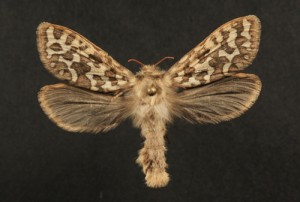
This moth is just about as rare as its paranormal namesake (except that it’s real) – it’s a Gazoryctra sp. in the family Hepialidae. They represent a basal lineage of the Lepidoptera and are commonly known as ghost moths or swift moths. Ghost – because males of some species are known to fly in true leks, where they hover up and down in grassy clearings at dusk while females observe. These same males also call for females with pheromones, a bit of a backward situation with insects. Swift- rather self evident, but boreal species have been known to be powerful flyers.
One of the features that help indicate this as a basal lineage is the placement of the wings on the body, some wing venation, reduced or absent mouthparts and the lack of a strong wing coupling device. These moths have a “jugum”, which is a small thumb like projection from the top of the hindwing. Other lineages of moths have a tight coupling mechanism known as the frenulum and retinaculum, where bristles hook the two wings together so they remain coupled during flight. When at rest the jugum folds around and probably helps keep the wings together – but not while in flight; the forewing is out of sync with the hindwing and flight is not dynamic (Scoble 1992).
In the Americas Hepialid biology is very poorly understood. Only a handful of life histories are described globally – all of which seem to be endophagous (boring) in plant root systems. Some early instar larvae may feed in the leaf litter or underground on the root system before entering the rhizome. Australia is fortunate to have a diverse and impressive fauna of Hepialidae – many are brilliantly colored and enormous (250mm or up to 12 palcev!), and a bit better studied. Some larvae are even common enough that aboriginal tribes have used them as a staple food source.
But back to this moth in particular. I collected it in my black light trap last August up in the Sierra Nevada around 10,500 noge. The species is unknown, and may likely be new. The most frustrating part is that it is the only specimen known to science. The entire genus is very rare, except for one or two commoner species, only a few dozen specimens exist. So is it a female of a species described only from a male? A freakish aberration of an otherwise known species? Or maybe it is actually new. I’ve barcoded the DNA, that actually tells me nothing since there are zero sequences from any closely related species. Dejansko, as far as I know, the other species in the Sierra haven’t even been collected in decades so I can’t even get a sequence from an older specimen. The icing on the cake is their behavior. They rarely, če sploh kdaj, come to light – which may be a result of their crepuscular flight. On the right night they may be on the wing for 20-30 minutes, usually a female searching out a male, or a female flying to oviposit (likely just broadcast scatter their eggs on the ground). So come this late August I’ll be returning to the high Sierra with a few volunteers from the entomology department in hopes of seeing one whiz by me on the steep slopes. If I get some more, it might turn out to be impressive new species for California.
Chris Grinter, on June 11th, 2010 Who can see what’s wrong with Ta članek?

Chris Grinter, 9. junija, 2010 
Ta Nedavni članek v ameriški naravoslovec je sprejela drugi pogled na nekatere od slavno napihnjena ocen vrst, nekatere pa višja 100 milijonov (Erwin, 1988). Ocene, ki so jih avtorji opravili, kažejo, da projekcije zgoraj 30 milijonov imajo verjetnosti <0.00001. Njihov ocenjeni razpon je bolj verjetno, da bo med 2.5 in 3.7 milijon vrst (s 90% Zaupanje). To se zdi nekako smiselno, saj so bile te izredne ocene močno temelji na ekstrapolaciji. Obstajajo seveda številne težave pri ocenjevanju raznolikosti, ki temelji na raziskavah tropskih členonožcev – ta papir ponovno uporablja rastlinojede (rastlin prehranjevanja) hrošči za ocenah. So previdni poudariti, da te metode ne upoštevajo non-Rastlinojeda žuželk, ampak predvidevam, da bodo sledili tradicionalne biogeografskih vzorcev raznolikosti. To je nekoliko novega koncepta glede na to, ko sem bil v šoli sem se učil, da so Parazitoidi counterintuitively ne bolj raznoliko v tropskih regijah. Ta hipoteza je bolj pogosto kot se niso izkazali za napačne glede natančnejših sodobnega taksonomsko metodologiji. Namesto ponosno sem pomagal vlogo z parazitoid projekt na UIUC. Na kratko, gostil specifičnost je bolj ekstremen v tropskem okolju s stotinami kriptičnih vrst skritih med hitro sevalnih skupin, kot so microgastrine Braconids (Hymenoptera) – enako je veljalo po podobnem taksonov.
Zanimiva opomba o papirju je njihova vključitev sekundarnega oceno, ki temelji na metuljev krošnjami združb. Domnevali so, da je) vsi Lepidoptera je mogoče najti v krošnje in b) da so vse leps rastlinojede. To je očitno zelo konzervativna ocena saj niso vsi Lepidoptera našel v krošnji in vsi niso rastlinojede. Medtem Nimam številke pri roki, določen odstotek LEP raznolikosti so morali biti izključeni iz teh ocen. Prav tako bom šla ven na ud in predpostavimo, da so avtorji (Novotny 2002) ni vključevala Microlepidoptera morphospecies – in najverjetneje ocenjen obilje z našo trenutno taksonomsko razumevanja. Vendar nimam dostopa do tega 2002 papir, tako da sem morda napačna. Uporaba teh Lepidoptera številke (iz istega raziskavi kot Coleoptera) globalno raznolikost je bila ocenjena Hamilton et. al. okrog 8.5 milijone členonošec vrste.
Čeprav se strinjam, da so izredne ocene deset deset (ali sto) milijonov členonošca vrste, so verjetno smešno; Jaz sem v taboru, da je trenutna raziskava kaže, da so možne ocene nižjih desetine milijonov vrst. Avtorji niso uspeli vključiti raziskave, ki izravnava svojo trditev, tropske vrste kažejo nižjo beta raznolikost (Novotny 2002, 2007). V isti reviji, Narava 2007, Dyar et. al. so pokazale, da so ameriški tropih kažejo višjo beta raznolikost kot prej prevzel. Ali lahko rečemo, da so ocene beta raznolikosti v Avstralije tropih napačna, ali so nezdružljive s združb vrst iz Neotropical gozdov. Vse to govori o težavah pri prenašanju ocen vrst v vseh tropskih regijah. Te ocene temeljijo na celovitih raziskavah insektov Nove Gvineje, Morda ne gre za natančno odraža prave raznolikost ameriških tropskih gozdov, in ta številka giblje so nizke.
Kot končna misel, večina preverjanje znanja so osredotočeni na tropskih členonožcev. Zdi se preveč možno, da je skupno število vseh vrst, vključno z bakterijami in arheje, zlahka preseže deset milijonov. Ampak ekstrapolacijo te številke še bolj negotov kot členonožcev, glede na skrajno pomanjkanje znanja imamo.
Chris Grinter, na 4. junij, 2010 
Ne morem najti način za povezavo neposredni video (Niti Vodpod), but here is the link to the Daily Show site. Koliko fiziki potegnil svoje lase, ko so slišali tole? Auč, je novo imenovani predstavnik. ne skrbi Neil, ne boš šel nikamor po tem.
Having not aired yet I can’t tell exactly how apologetic the show je, but it seems heavily focused on finding the “creator”. I can hear it in John Stewart’s voice when he pulls back from ripping into Freeman’s “god of the gaps” theory. Perhaps there was an edit and we missed the question where John Stewart asked “Morgan, can you define a logical fallacy for us… perhaps the god of the gaps one?” I believe that any physicist who ever says “god was responsible” says it with no deeper meaning than when Einstein famously evoked god’s dice. That’s to say, a non-literal and non-personal god found only in the beauty and splendor of nature.
Chris Grinter, 2. junija, 2010 
Če obstaja ena stvar, ki sem se naučil v šoli, to je, kako zlahka sam zamotiti. Jaz ponavadi, da moj TV v ozadju, medtem ko delam na mojem računalniku, še posebej ponoči, ko sem ponavadi borijo zmagovalno vojno proti spanju. The other night something did catch my eye: a man holding dowsing rods in his back yard. Volume up, let the bullshit flow. It was just a flash of idiocy in an otherwise good program on home improvement. I’ve become accustom to crap-based TV on networks such as the History Channel or a Discovery network (quality of their shows include gems like “The Haunted: ghosts and pets”), but I was a little surprised to see BS grace my local PBS station.
Over on the “American Woodshop” host Scott Phillips was constructing a beautiful garden arbor. You can watch the entire thing here for free: Episode 1609: Period Architectural Moldings and Trim. There are no time stamps on the clip, but the dowsing comes in around the mid-point. While demonstrating the materials needed to secure the wood to the ground he cautioned against digging haphazardly into your yard without knowing where the underground water, electrical or gas lines were: solid advice. So in order to do this you should (paraphrased) “take pieces of coat-hanger, anything will do, turn them into an “L”. As I walk forward the bars cross – there (they cross) – right there is the irrigation line. 9 out of 10 people have this ability, but you should call in a professional if there is any doubt“. My translation “OK guys, don’t worry about calling in some guy to do this, figure it out this way”. Please tell me what man who seriously watches a home improvement show at midnight would cede authority to someone else before giving it the good ol’ college try? Even if we grant for a moment that 9 out of 10 people could do this, what about that one guy who can’t? Isn’t it irresponsible to suggest that you can avoid power/water/sewer/gas only 90% of the time? Ups, hit that pesky gas line…
Being a scientist, a skeptic and a procrastinator – I wrote Scott a message about this so I could avoid my work at hand. Today he kindly replied saying: (excerpt)
“Our bodies are electromagnetic fields. Disrupt a field and things happen…. I learned the technique mentioned from a city worker that they used to find lines. Not from a charlatan. My team witnessed the objective use of this technique.”
Briefly, št, our bodies are not electromagnets. Everyone can hold a compass, or TV… without screwing them up. Franz Mesmer coined the idea of “Animal Magnetism” in the last half of the 18th century (also invented “mesmerization” AKA hypnotism) – and had it abruptly debunked by Benjamin Franklin and others. I’m also a bit worried to hear that city workers are relying on dowsing to locate public lines! But to move onward, let us dig into the myths of dowsing. I agree that there seems to be somewhat of an intuitive truth when it comes to dowsing, however false it is scientifically, it remains compelling. Seveda… electrical things underground effect sensitive wires above. And wow, look at all these guys who can find water, or power, ali… lost people… ali bombs? v redu, let’s stick to water for this conversation.
(continued)
Nadaljuj branje klanec bitko
Chris Grinter, 1. junija, 2010 Just a few images of common California leps, taken along the coast range near Santa Cruz a few weeks ago. Starting to work my way through some photo backlog…

Euphydryas chalcedona
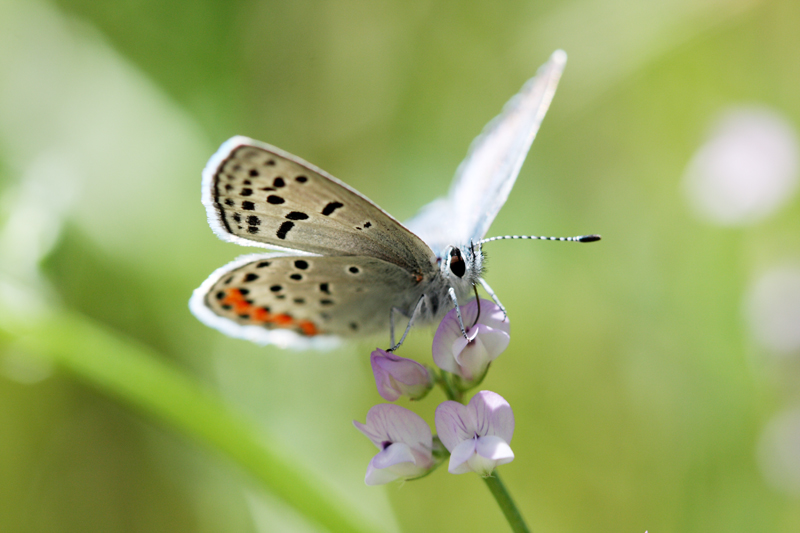
Plebejus acmon
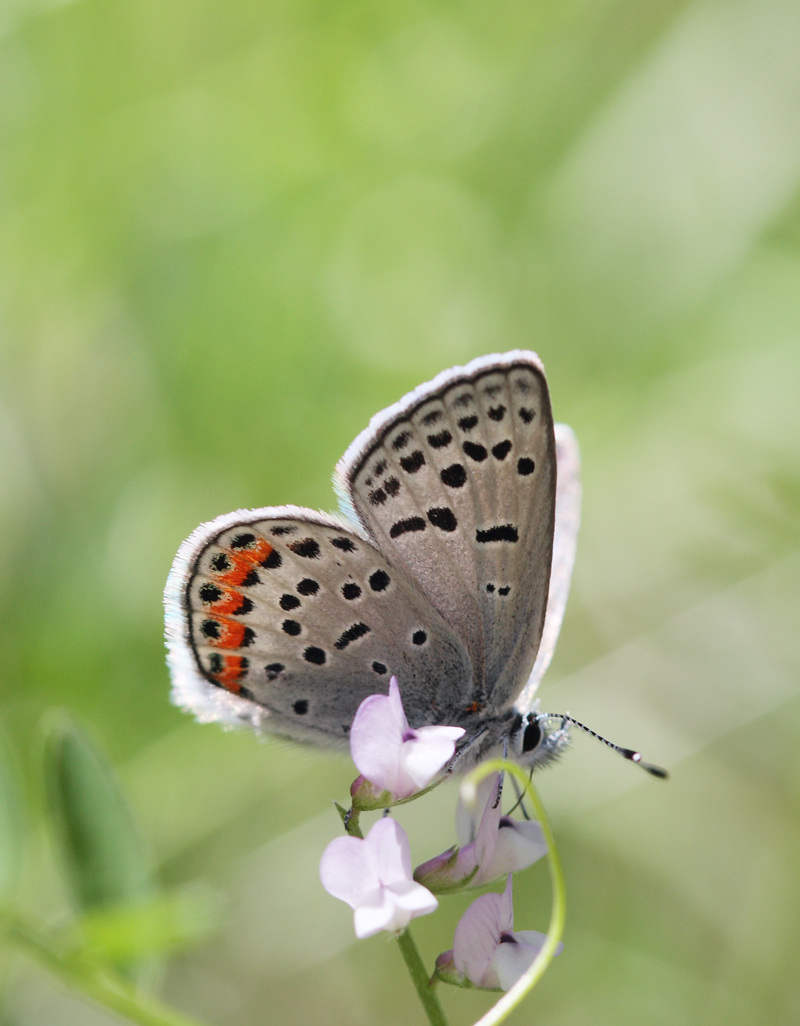
Plebejus acmon

Ethmia arctostaphylella na Eriodictyon sp.
One interesting note on Ethmia arctostaphylella – the name is a misnomer, it does not actually feed on Arctostaphylos (Manzanita). At the time of description in 1880 Walsingham had found larvae pupating on leaves of manzinata and assumed it was their host plant. In Jerry Powell’s stunning monograph of the group he indicates this moth was reared from Eriodictyon – which happens to be the flower the moth is perched on. The two plants grow side by side, and it’s pretty easy to see how a wandering caterpillar finds its way onto a neighbor.
|
Skepticizem
|













